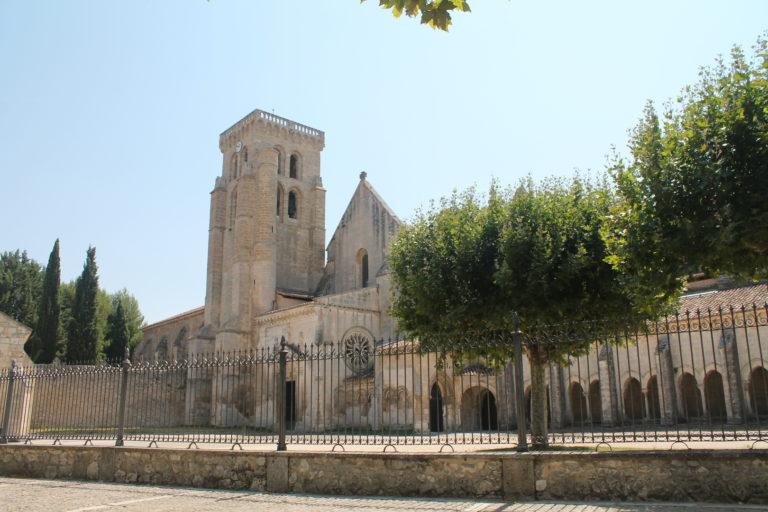1- REAL SITIO DE LAS HUELGAS- PARRAL – PUENTE MALATOS
On the western side of the city, south of the river Arlanzón, is the monastery of Santa María La Real de Las Huelgas. It was founded by King Alfonso VIII and his wife Leonor de Plantagenet with the aim of it being a monastery for nuns and royal pantheon, and soon it became one of the most important monasteries of the Kingdom of Castile. Its abbess enjoyed a great civil power, religious and even jurisdictional authority, it was only accountable to the King and the Pope. The monastery could be accessed by the Malatos bridge, where the pilgrims crossed on their way to Santiago. The complex was formed by the Monastery and the Hospital del Rey (King’s Hospital), connected by a huge estate known as El Parral.
2-LA ISLA PARK
Known on the XIII century as “the washers” promenade, it possesses a rich botanical variety and a harmonious romantic design. The park is home to almost one hundred plant species and all along the walk there are various beautiful monuments.
The palace of La Isla is built next to the promenade, of a romantic-Gothic style, that now hosts the Institute for the Spanish Language of Castile and León.
3- PASEO DE LOS CUBOS
This unique promenade, also known as “The Winter promenade” by locals due to the wind protection provided by the walls, has been so named since the 19th century . It covers the best-preserved part of the medieval walls that enclosed the city and had 93 circular towers, known as “Cubos” and 12 gates. This promenade contains the gate to the Jewish quarter, which led to the synagogue and Doña Lambra tower.
4- SANTA MARÍA BRIDGE
It is a medieval bridge that has been rebuilt many times throughout history. Its newest remodelling was in 2007, when it became a pedestrian walkway. It is one of the oldest bridges of the city and connects the neighbourhood of Vega with the old town.
This is where, according to the French writer Alexandre Dumas: “…in front of you, firstly, its most beautiful gate, monument of the Renaissance, built in honour of Charles V… Then on your right and to the right of this gate, you will see rising, like two stone arrows, the bell towers of this remarkable cathedral, that seem as if they are placed in the visitor’s path as a preview of the wonders they are about to see”.
5- PASEOS ESPOLÓN AND ESPOLONCILLO
This beautiful promenade, fruit of the enlightened reformations made in the city at the end of 16th century, is the most symbolic of Burgos. Under the shadow of its leafy plane trees a nice and peaceful atmosphere can be enjoyed, especially during summer months, and its picturesque coffee shops and restaurants have made it the heart of local leisure time. On the south side is the Paseo Espoloncillo, created during the Napoleonic invasion of the 18th century, which has become the natural expansion of Paseo Espolón, connecting the gate of Santa Maria with Paseo de la Isla.
6-SAN PABLO BRIDGE AND POST OFFICE
For centuries, the bridge of San Pablo connected the old town with its southern expansion on the other side of the river Arlanzón, where many religious buildings were built. In around 1915, the Post Office building was built in the old Convent of the Trinitarians. In the middle of the 20th century, the bridge became an emotive “cidian way” with eight monumental statues of people related to the figure of El Cid, whose equestrian statue dominates the space in front of the bridge.
7-HUMAN EVOLUTION MUSEUM – PASEO DE ATAPUERCA – CONVENTO DE SAN JOSÉ AND SANTA ANA
Between Paseo de la Quinta and San Pablo bridge, on the left side of the Arlanzón river, there is a modern and pleasant urban walk that connects the convent of San José and Santa Ana, the last founding of Santa Teresa de Jesús, and the Museum of Human Evolution, the auditorium and conference centre. This promenade, full of statues and elements that reference the archaeological site of Atapuerca and a fountain that plays with different shapes of water, is one of the most beautiful areas of the city.
8-CARTUJA – QUINTA – FUENTES BLANCAS PARK
On the most southern side of the Arlanzón riverbank is the Carthusian Monastery of Miraflores, a wonderful monastery conceived as the majestic chest that guarded Isabella I of Castile’s most precious treasure: her parent’s resting place. This beautiful spot is located in an environment with no less charm: the park of Fuentes Blancas and Paseo de la Quinta, both of them very beautiful green areas.



